Birding is an underrated hobby connecting people with nature, travel, and like-minded individuals. It’s an inexpensive pastime that fosters mindfulness, allowing you to be fully present and aware in a moment. Plus, birds are awesome, intelligent creatures that deserve further research and understanding.
South Carolina is a popular birding destination because it gives you a wide variety of nesting birds, seabirds, shorebirds, and migrants. Check out this list of South Carolina’s ten best bird-watching spots to visit this summer.
1. Huntington Beach State Park
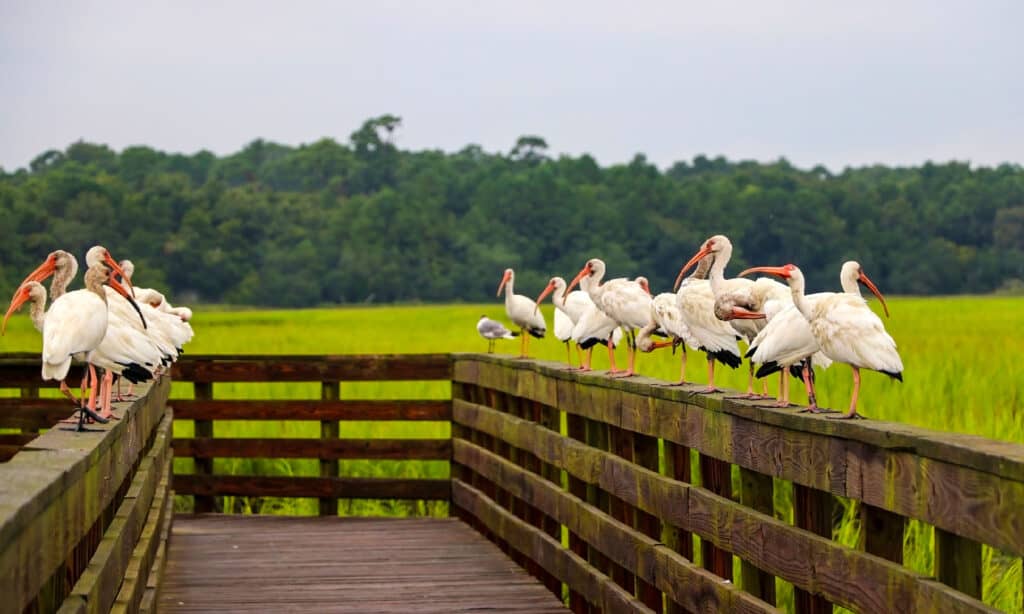
Huntington Beach is the best birding destination in South Carolina.
©iStock.com/UWMadison
According to avid South Carolina birders, Huntington Beach is the best birding destination in the state. You can visit this state park any time of the year and get the chance to spot over 300 species. It’s located in the wetlands near the Atlantic Beach in Murrells Inlet. Check out the freshwater causeway for your chance to see the bald eagle soaring majestically in the blue sky. You can watch them steal food from ospreys over Mullet Pond. Some other birds you can see in the park include loons, scoters, gulls, terns, ducks, purple sandpipers, jaeger, wood stork, and razorbill.
2. Santee National Wildlife Refuge
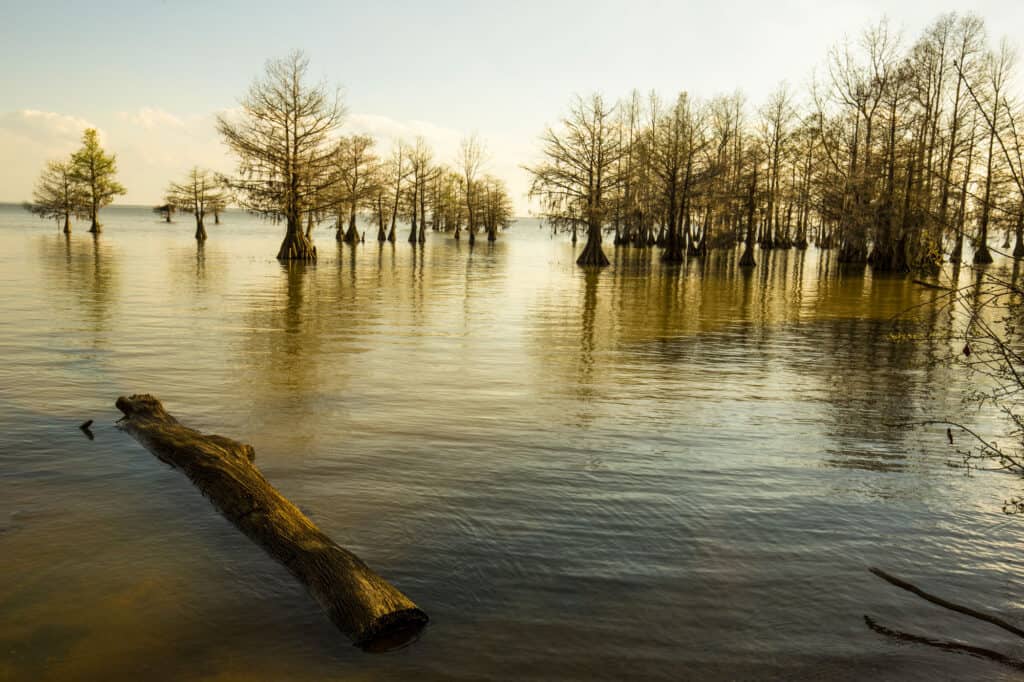
Santee National Wildlife Refuge provides nature trails, boardwalks, and observation towers at the state’s largest lake.
©Jeff Holcombe/Shutterstock.com
Check out this 15,000-acre refuge near Lake Marion in Summerton, South Carolina. Santee National Wildlife Refuge provides nature trails, boardwalks, and observation towers at the state’s largest lake. Visiting can be somewhat confusing because there are four separate units, each around ten miles apart. Waterfowl are abundant during the winter, including wood storks, ospreys, bald eagles, wading birds, and sandhill cranes. In the spring, you can find migrants like wood ducks, wild turkeys, king rails, warblers, nuthatches, and buntings.
3. Cape Romain National Wildlife Refuge
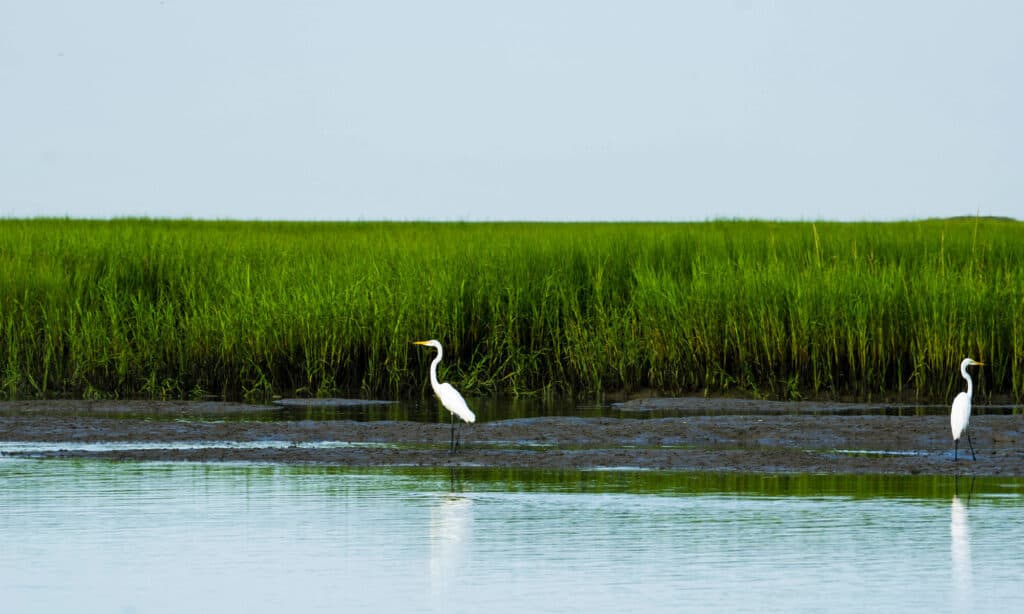
Cape Romain is over 66,000 acres in Southeastern South Carolina in Awendaw.
©iStock.com/makasana
Cape Romain is over 66,000 acres in Southeastern South Carolina in Awendaw. The wildlife refuge extends 22 miles along the coast, which includes salt marshes, barrier islands, and coastal forests. It has nearly 300 bird species, some residents, and some migrants. You can find peregrine falcons, marsh wrens, white pelicans, and oystercatchers. Take a boat tour to Bulls Island, where you will find one of the best birding sites on the refuge.
4. Savannah National Wildlife Refuge
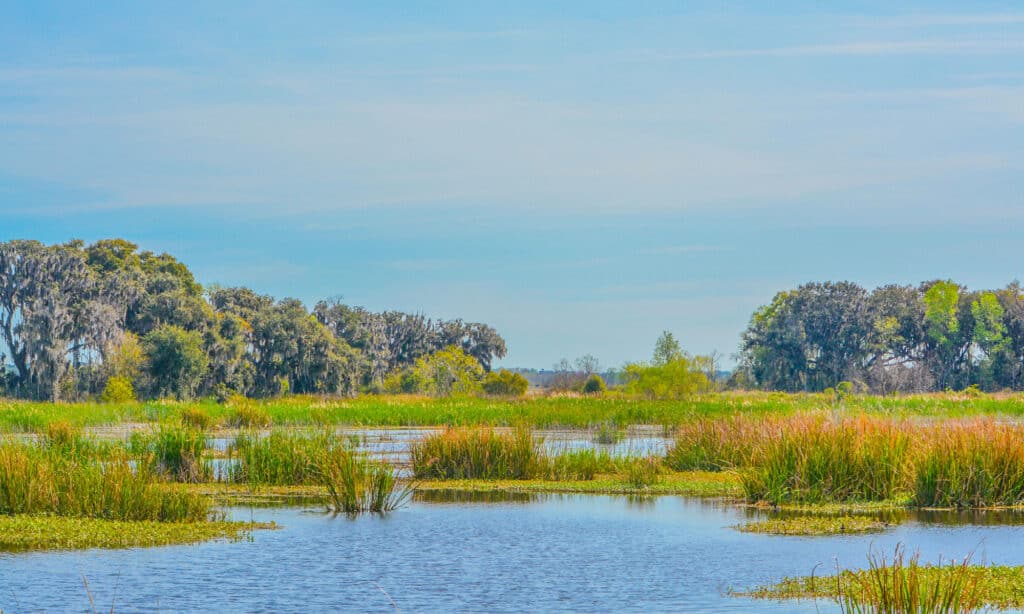
The Savannah National Wildlife Refuge was established in 1927 as a sanctuary for migratory birds, especially waterfowl.
©iStock.com/Norm Lane
The Savannah Refuge is 35,551 acres; half is in Georgia, and the other half is in South Carolina. The refuge was established in 1927 as a sanctuary for migratory birds, especially waterfowl. The area contains over 29,000 acres of freshwater marsh and dates back to the plantation era. In addition to alligators, you can find an abundance of wading birds, including storks, snowy egret, white ibis, and spoonbill. You can also spot nesting birds like least bittern, osprey, bald eagle, and painted bunting.
5. Caesars Head State Park
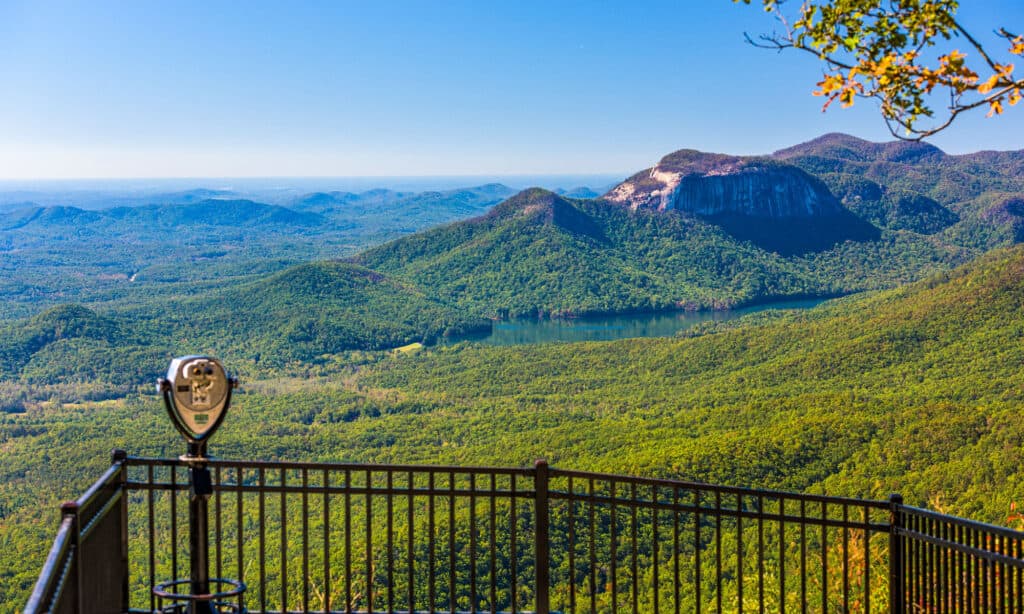
Caesars Head is 13,000 acres in the Mountain Bridge Wilderness in Northern Greenville County.
©Sean Pavone/Shutterstock.com
Caesars Head is 13,000 acres in the Mountain Bridge Wilderness in Northern Greenville County. This Appalachian area gives you a unique sampling of nesting birds who travel to the densely forested mountains during the spring and summer. You can find the blue-headed vireo, hooded warbler, American redstart, black-throated blue warbler, and scarlet tanager. Caesar’s Head is also an excellent spot to watch for hawks and falcons. Check out these raptors in late fall.
6. Francis Beidler Forest Audubon Center and Sanctuary

The Francis Beidler Forest is in Four Holes Swamp, a blackwater creek system in Harleyville.
©iStock.com/Rachel1221
The Francis Beidler Forest is in Four Holes Swamp, a blackwater creek system in Harleyville, South Carolina. The sanctuary contains 18,000 acres of bald cypress and tupelo swamp, with over 1,800 acres of old-growth forest containing trees 1,000 years old. The swamp forest has a winding boardwalk, or you can travel by canoe or kayak. Some signature bird species include barred owls, prothonotary warblers, yellow-crowned night herons, white ibis, red-shouldered hawks, and swallow-tailed kites.
7. Bomb Island on Lake Murray
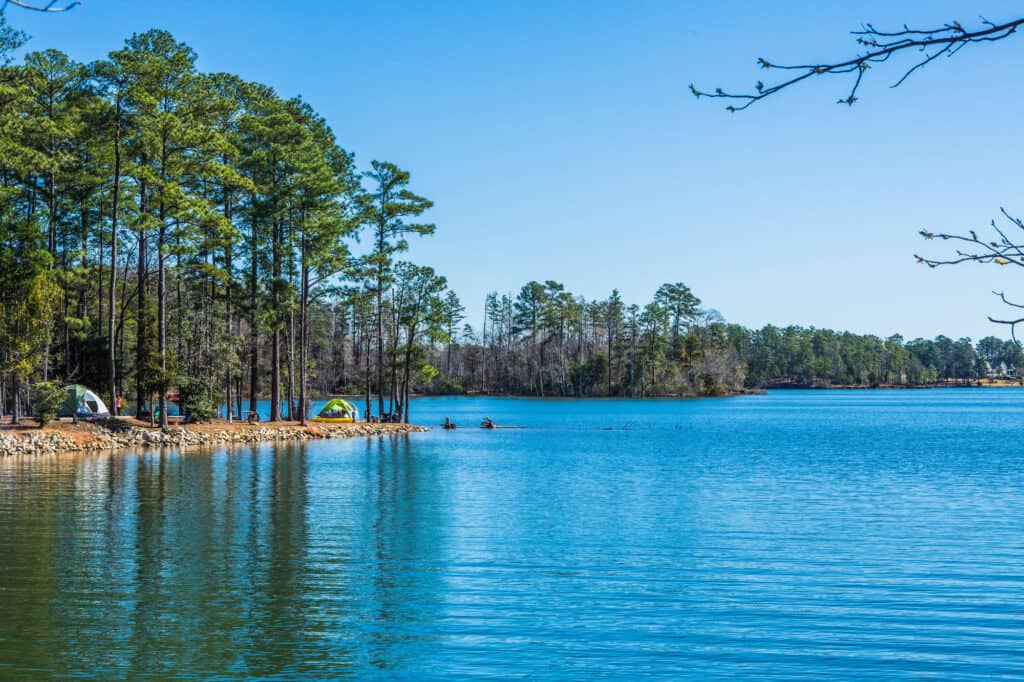
Bomb island sits in the middle of Lake Murray in Lexington.
©Carol Mellema/Shutterstock.com
Bomb island sits in the middle of Lake Murray in Lexington, South Carolina. It is one of South Carolina’s best bird-watching spots and a can’t-miss spectacle. Bomb Island is the largest purple martin sanctuary on the continent. Summer evenings come alive with thousands of purple martins flying to the secluded island to roost. Take an evening boat tour to get an up-close view of this fantastic sight.
8. Caw Caw Interpretive Center
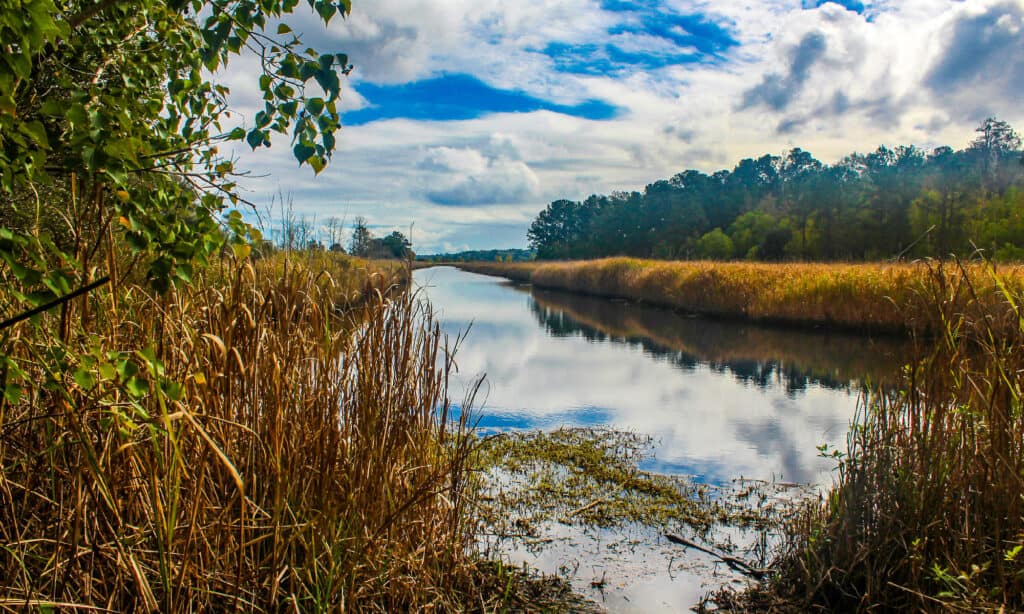
The Caw Caw Interpretive Center is in Ravenel.
©iStock.com/Nicholas Nace
The Caw Caw Interpretive Center is in Ravenel, South Carolina, and lies on a historical rice plantation. It’s only 20 miles from downtown Charleston and an excellent place to connect with nature. Walk along the well-marked trails and this scenic birding experience. It contains 654 acres with over 250 bird species. The unique birds at this center include swallow-tailed kites, indigo bunting, egrets, Acadian flycatchers, American pipit, bank swallow, and belted kingfisher.
9. Bear Island
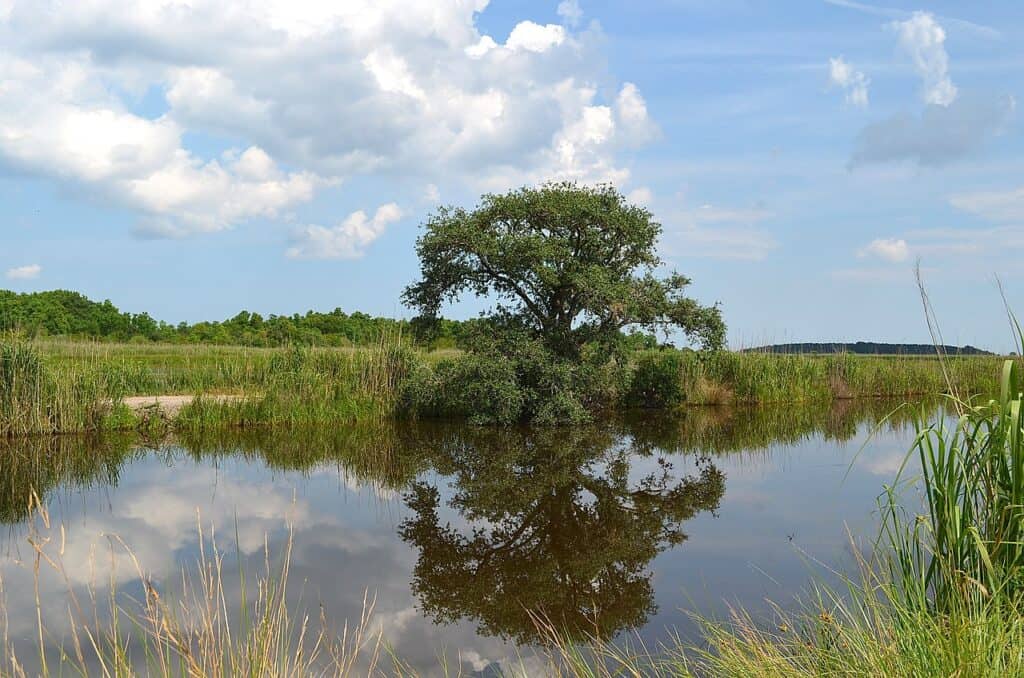
Bear Island is a sea island in Colleton County.
©mogollon_1 / CC BY 2.0 – License
Bear Island is a sea island in Colleton County, part of the ACE basin estuarine reserve. The island contains over 12,000 acres of hunting and birding areas, featuring observation platforms. While many come for the numerous flocks of wading birds, there are many more species to enjoy. Get a glimpse of bald eagles, white pelicans, mottled ducks, tundra swan, Mississippi kites, clapper rails, and black-necked stilts.
10. Audobon Swamp Garden
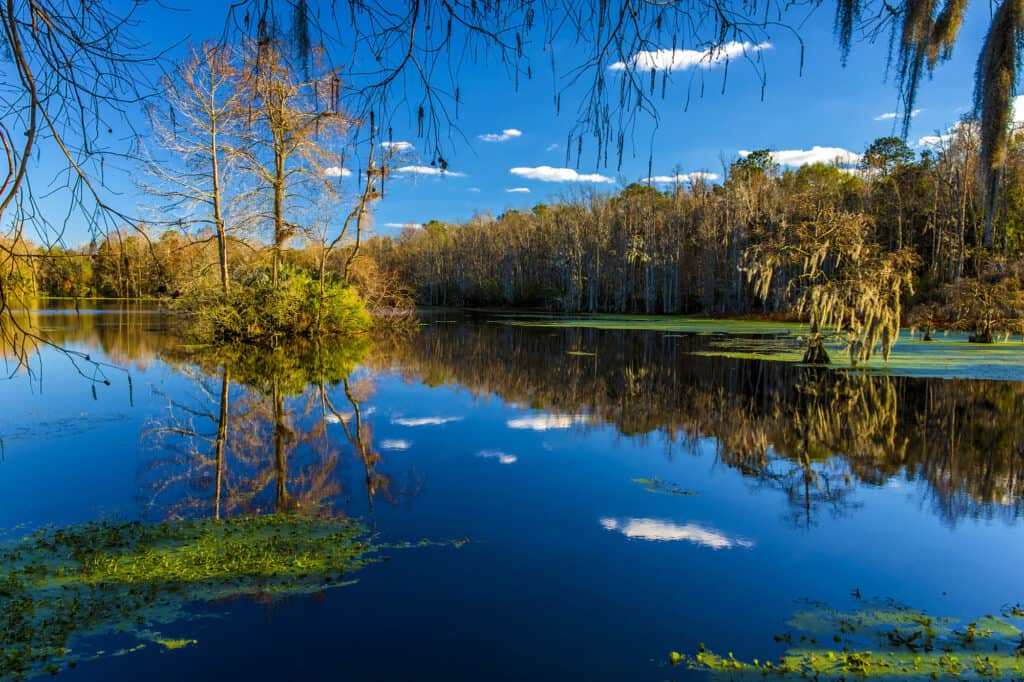
The Audobon Swamp Garden is on the grounds of the Magnolia Plantation in Charleston.
©iStock.com/CarbonBrain
The Audobon Swamp Garden is on the grounds of the Magnolia Plantation in Charleston, South Carolina. The garden has 60 acres of cypress and tupelo swamp and makes you feel like you are in another world when you walk through this flooded forest. Apart from a breathtaking and mysterious stroll through nature, there is plenty of bird and wildlife viewing opportunities. You can find fascinating birds like egrets, herons, ruby-crowned kinglets, hermit thrushes, northern parulas, northern flickers, and pileated woodpeckers.
The photo featured at the top of this post is © iStock.com/UWMadison
Thank you for reading! Have some feedback for us? Contact the AZ Animals editorial team.







